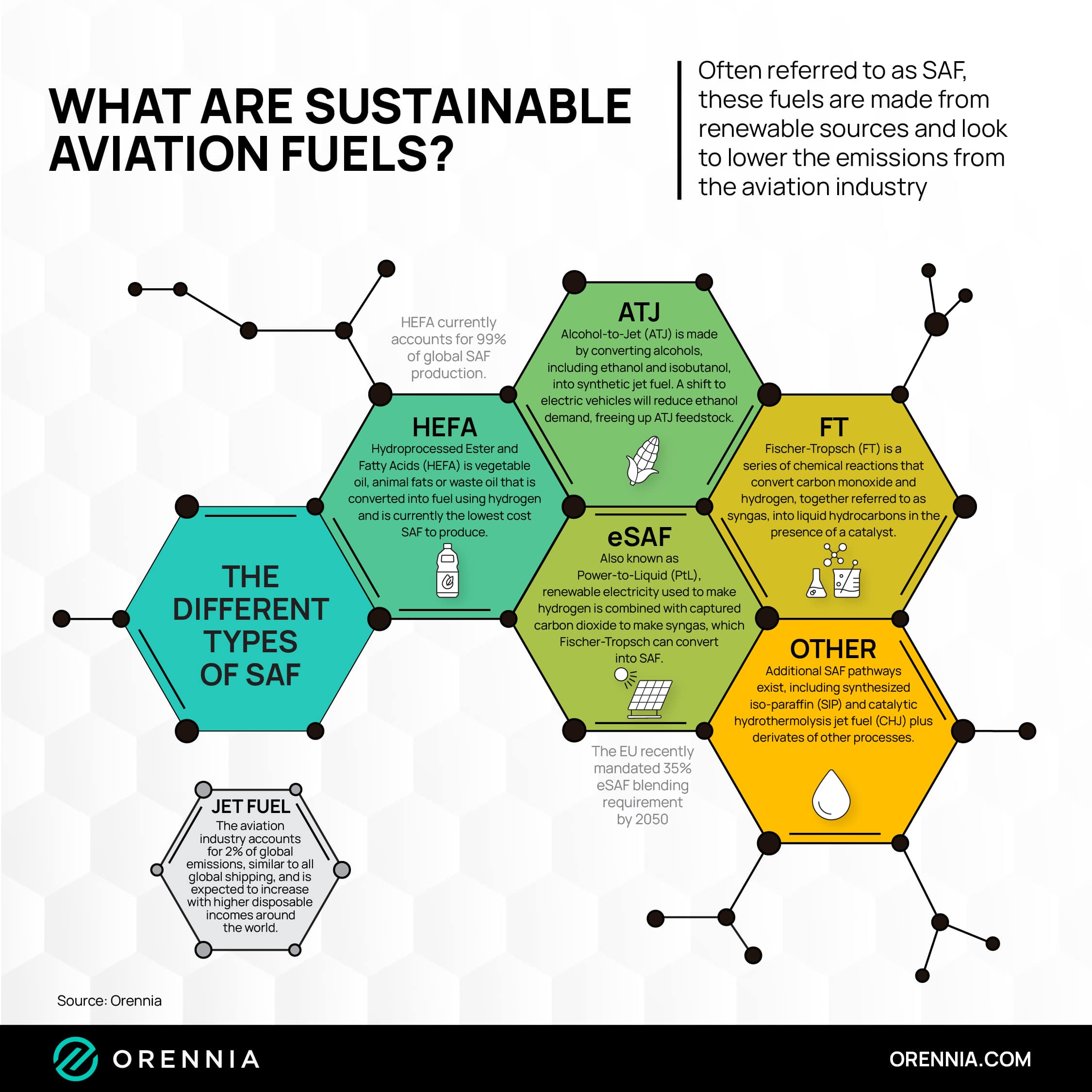
By Aaron Foyer
VP, Orennia
_____________
DATA SPOTLIGHT
Sustainable aviation fuels (SAF) are alternative fuels that aim to reduce the carbon footprint of aviation by using renewable resources. These fuels are produced from sustainable feedstocks and have lower lifecycle greenhouse gas emissions compared to conventional jet fuels.
- HEFA (Hydroprocessed Esters and Fatty Acids): Derived from various oils and fats, including cooking oil, algae oil, and animal fats. They’re made through a hydroprocessing technique and are chemically similar to conventional jet fuel, so can be used as drop-in replacements without requiring modifications to aircraft or infrastructure.
- Alcohol-to-Jet (ATJ): Made from alcohols, like ethanol, through a process that involves dehydration, oligomerization, and hydrogenation. ATJ fuels have similar properties to traditional jet fuels and can be blended in at various proportions.
- Fischer-Tropsch (FT): Synthesized through the Fischer-Tropsch process, which converts carbon-containing feedstocks, such as biomass or natural gas, into liquid hydrocarbons. The resulting fuel is free of sulfur and aromatic compounds and has a high energy density, making it suitable for aviation use.
- Power-to-Liquid (PtL): Produced by converting renewable electricity and carbon dioxide or water into synthetic hydrocarbons using electrolysis and chemical synthesis processes. These fuels offer the potential to decarbonize aviation by utilizing excess renewable energy and capturing carbon emissions.
- Synthesized Iso-Paraffin (SIP): Synthesized from renewable feedstocks, such as biomass or agricultural residues, through a process that involves hydrolysis, fermentation, and hydroprocessing. The resulting SIP fuel has have desirable combustion properties for aviation use.
- Catalytic Hydrothermolysis Jet Fuel (CHJ): Produced through a catalytic hydrothermolysis process that converts wet biomass, such as algae or agricultural residues, into a high-quality hydrocarbon fuel. This conversion offers a promising pathway for producing renewable jet fuel from non-food biomass sources.
Where SAFs are today
HEFA fuels are one of the most popular today, accounting for a majority of announced projects and future production capacity in the US and Canada (Orennia report here). In the future, limited by the availability of feedstock, other fuels may eventually dominate the market given the scale of global aviation and use of jet fuel.
Aaron Foyer is Vice President, Research and Analytics at Orennia. Prior to Orennia, he leveraged his technical background in management consulting and finance roles. He has experience across the energy landscape including clean hydrogen, renewables, biofuels, oil and gas, petrochemicals and carbon capture. 



